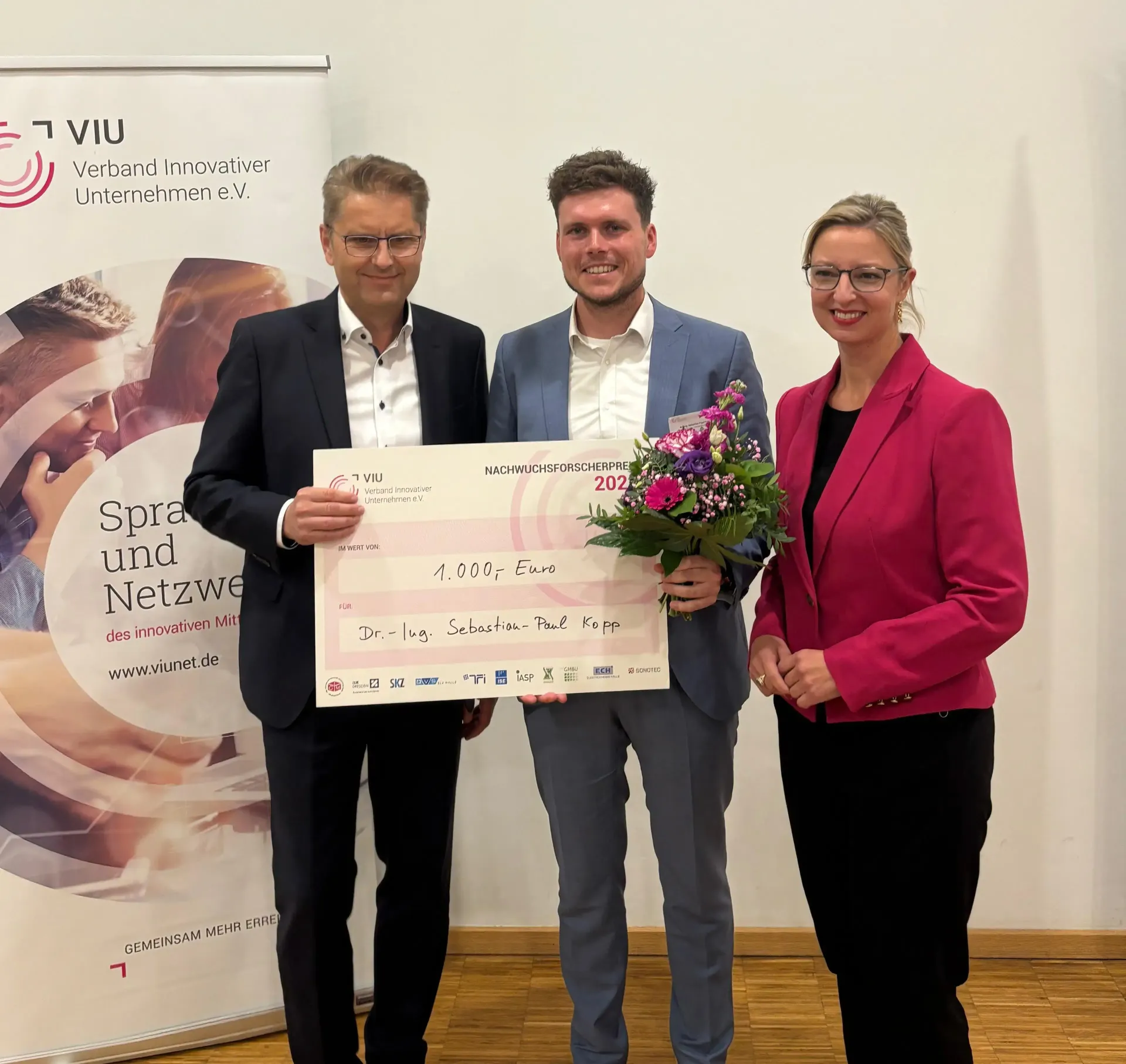Equipment and infrastructure at the Bavarian Laser Center
For our Research and development work We have a wide range of state-of-the-art equipment at our disposal. This includes our high-performance laser systems, sensors for monitoring processes, and a cutting-edge analytical laboratory for characterizing samples and components.
Contact us
Lasersysteme
On Bavarian Laser Center Erlangen We utilize a wide variety of laser systems. Our portfolio ranges from UV lasers through the visible and NIR ranges to long-wavelength CO2 lasers. Power output? From a few watts to several kilowatts.
We have laser beam sources from various renowned manufacturers such as TRUMPF, Laserline, Civan, Amplitude, Coherent and many others.
Your advantage? We use commercially available system technology, which significantly facilitates the transfer to your company, as all our devices are also commercially available.
IR-Laser
We use several disk and fiber lasers from different manufacturers with up to 8 kW output power. This allows us to perform a variety of applications, from cell contacting for batteries to welding thick sheet metal applications.
This allows us to offer the best solution for your product, regardless of the manufacturer.
Blue laser
Our blue laser is equipped with 4 kW of laser power and is ideally suited for welding hairpins or copper sheets. The advantage? High energy input ensures stable processes.
Discover the facilities of the Bavarian Laser Center
Learn about available laser systems, our process analysis equipment, our analytical laboratory, and our laser radiation characterization capabilities. Contact us without obligation Visit our website and learn how we can support you in developing or optimizing your processes with the help of our equipment portfolio.
Discover our publications
Our process sensors
Process observation and monitoring
With the right process sensors, information can be extracted from the process zone during the manufacturing process, enabling quality assessment. We offer a wide range of devices for process observation and monitoring.

HG camera
High-speed cameras can be used to record and subsequently analyze the dynamics of the process zone. This allows splashes or defects such as humping to be identified.

Optical coherence tomography
Optical coherence tomography (OCT) is ideally suited for detecting weld penetration depth. This allows for a reliable assessment of the weld quality with respect to depth. High acquisition rates combined with good spatial resolution make this technology a promising solution for deep penetration welding applications.

IR-Camera
High-resolution infrared cameras with temporal and spatial resolution can be used to detect the temperature distribution in the melt pool or the surrounding process zone. This is particularly important for temperature-sensitive assemblies, as it allows for the determination of temperature gradients and distributions that could potentially lead to damage to surrounding components.

Pyrometer
Whether single-wavelength or multi-wavelength pyrometers - this system technology allows for precise local measurement of peak temperatures or temperature distributions and is ideally suited for evaluating process quality or controlling processes based on temperature information.
Our analytical laboratory
In addition to material processing, the Analysis of the generated structures unavoidable. We have a wide range of state-of-the-art equipment at our disposal for characterization.
Metallographielabor
We have a state-of-the-art laboratory on-site for sample preparation and analysis. This means you receive all results firsthand and with minimal turnaround times.
scanning electron microscope
Our SEM is a true workhorse when it comes to examining the laser-treated area. With it, we can determine the microstructure and element distribution, as well as defects such as microcracks.
Laser Flash Analyzer
Our laser flash analyzer allows us to determine thermal material properties such as thermal conductivity at temperatures up to 1,250 °C. This enables us, for example, to characterize dissimilar joints or contaminated materials.
Simultaneous thermal analysis
Simultaneous thermal analysis allows for the determination of temperature-dependent mass changes and phase transformations. This technology is indispensable, especially when dealing with the wide variety of materials.
Spark spectrometer
Only when the chemistry is right can the desired properties be achieved. Our spark spectrometer allows for highly precise determination of the chemical composition of a wide variety of materials.
Particle measuring device
The particle size distribution (PGD) is crucial for additive manufacturing processes. With our particle measuring device, we can determine the PGD in a very short time and provide you with feedback on whether your powder material is suitable for your processes.
Tensile-compression testing machine / Mechanical testing
Anyone joining materials should also know what the joint can withstand, right? We have a universal tensile-compression testing machine at our disposal for this purpose. With it, we can test the joint area for its mechanical strength. Subsequently, an analysis of the fracture surface using digital microscopy is also possible.
Laser Scanning Microscope
Our laser scanning microscope allows us to resolve the finest structures on the surface of materials with high precision. Anyone working with the highest precision must also be able to measure it.
Profilometer
Our profilometer assists us in the optical geometry analysis of weld beads, joints, and entire components. The best part? The integrated comparison between target and actual contours allows problems such as distortion to be identified directly.
Our expertise as part of the equipment
Characterization of laser radiation
Knowing how and where energy is introduced into the workpiece is essential for designing efficient processes. We have the necessary expertise and equipment to provide support in this area.
Caustic or beam measurement
Anyone working with lasers also needs the right tools to determine the beam profiles and the power reaching the workpiece.
Using our MicroSpotMonitor (MSM) and Focusspotmonitor (FM ), we can determine the beam profiles at different beam sizes and wavelengths.
Power meters
Furthermore, we have several power measuring heads available, enabling us to precisely measure laser power in the process zone up to the double-digit kW range.
Detection of X-rays
Laser material processing, especially when using ultrashort pulsed laser radiation, can potentially generate harmful X-rays. But don't worry: we have the necessary equipment to detect these X-rays, so you don't have to fear that your staff is exposed to any unwanted risks.
Further analyses
The aforementioned equipment is only a selection of our capabilities. In addition, we possess various devices for analyzing, for example, shear strength, detecting X-rays, or performing hardness measurements.
FAQs on the quality of laser processes
The success of a laser process depends on a variety of factors. Learn here what to consider.
Which system is the right one?
While the laser is a versatile tool, it's impossible to make a general statement about which system is the right one without knowing the specific circumstances. We understand the influencing factors and know which systems are best suited to which requirements.
What influence does the wavelength have?
Every material has a characteristic, wavelength-dependent absorption of laser radiation. In principle, the higher the absorption, the more efficient and controllable the process. However, this does not necessarily mean that better absorption is always advantageous.
Pulsed and CW - what's the difference?
In very basic terms, pulsed laser radiation is particularly suitable where the highest precision combined with minimal energy input is required, e.g., in surface structuring or glass welding. Continuous-wave (CW) laser radiation, on the other hand, is advantageous for processing thicker materials, such as when welding cell contacts or copper joints.
How do I ensure the quality of my processes?
Quality can be assessed either in-situ by recording live process data or ex-situ through (destructive) testing of components. Ex-situ analysis is recommended for process development, while in-situ methods should be used for series production processes to generate maximum output.
Which sensor technology makes the most sense for me?
Choosing the right sensor technology depends on the process regime. For deep penetration welding applications, for example, optical coherence tomography offers the possibility of recording depth information. We would be happy to advise you comprehensively on which sensor technology is best suited for your application.
Why is the characterization of my editing optics so important?
Only those who know how laser power is distributed at the workpiece can ensure long-term quality in their production.





